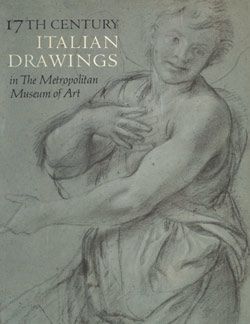Head of a Woman Looking to Upper Left
Attributed to Annibale Carracci Italian
or, less likely, Ludovico Carracci Italian
Not on view
Reminiscent of an ancient Roman sculpture, this arresting depiction of a monumental female head has been attributed on sound grounds to Annibale Carracci, by whom other similar drawings are known. Although no such figure is found in any of Annibale's paintings, the classicizing, idealized facial type recalls his frescoes in the Palazzo Farnese in Rome. (An earlier attribution to Annibale's older cousin and early collaborator, Ludovico Carracci, recorded in the annotation at lower left, is less plausible.) The scale and technique suggest that the work may be a cartoon, a full-scale study for a corresponding detail in a finished work. It is possible that the figure's ill-defined headdress is meant to be a turban, in which case she-like some of the other female subjects represented in drawings hanging nearby-may be a sibyl or ancient prophetess.
The head is drawn in an exquisitely atmospheric technique, even though the individual strokes of the bold hatching are largely evident, and the seamless rendering of tone is calibrated to be viewed from a distance, as is true of most cartoons, especially those for frescoes. The woman's head type can broadly be related to examples in fresco cycles by both Annibale and Agostino, and could date about 1595-1602 (before Agostino's death). Both the superb quality of the drawing and the psychological presence of the figure, however, make it tempting to attribute this cartoon fragment to Annibale himself.
Due to rights restrictions, this image cannot be enlarged, viewed at full screen, or downloaded.




